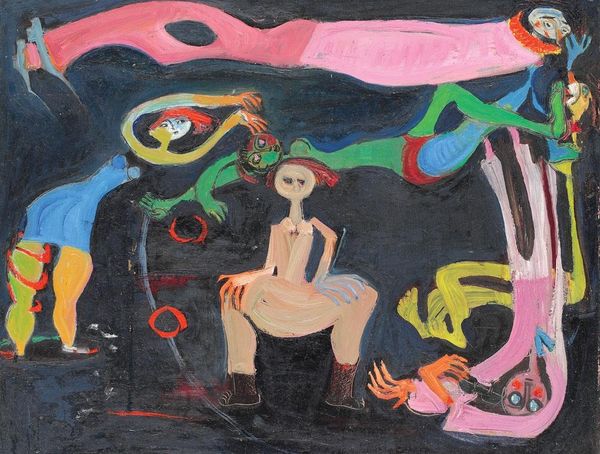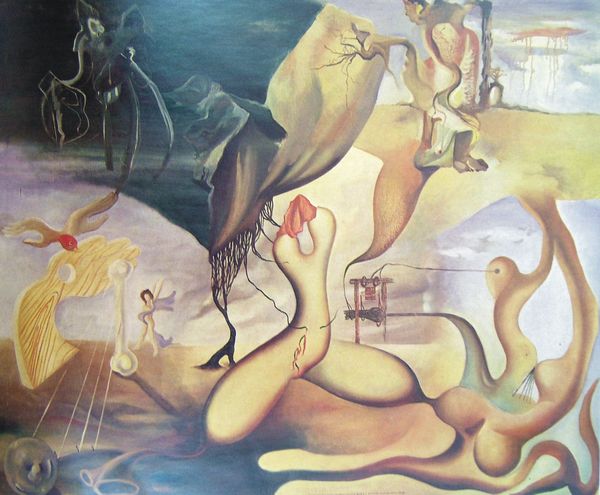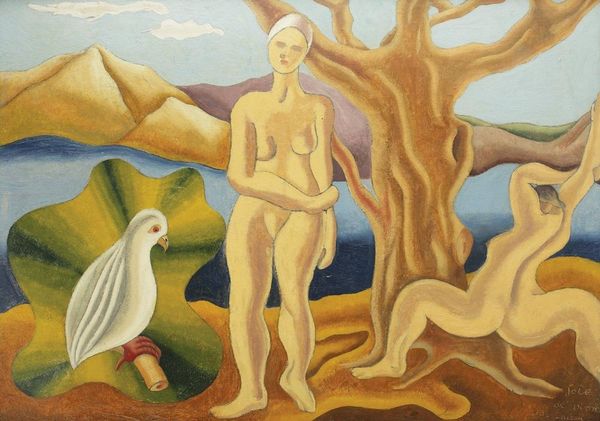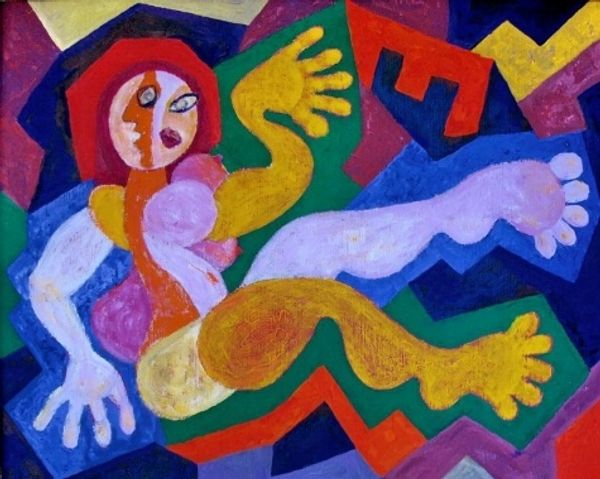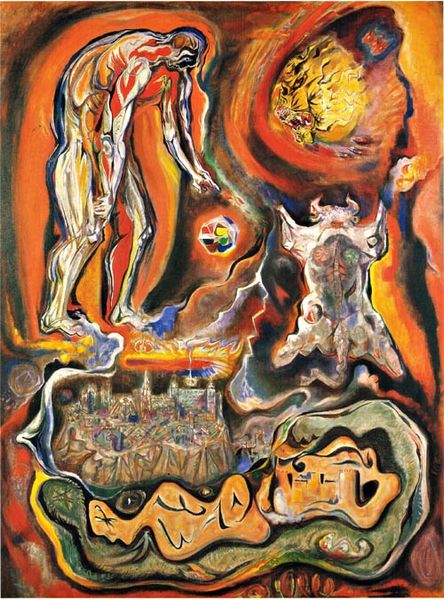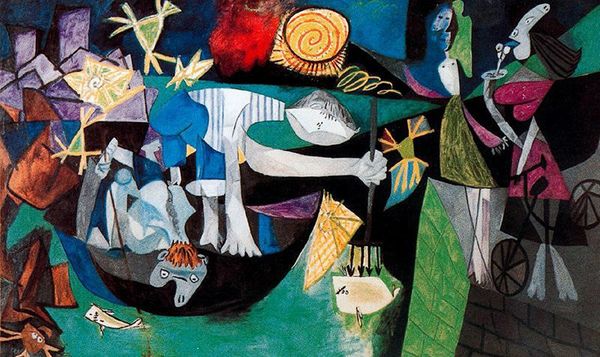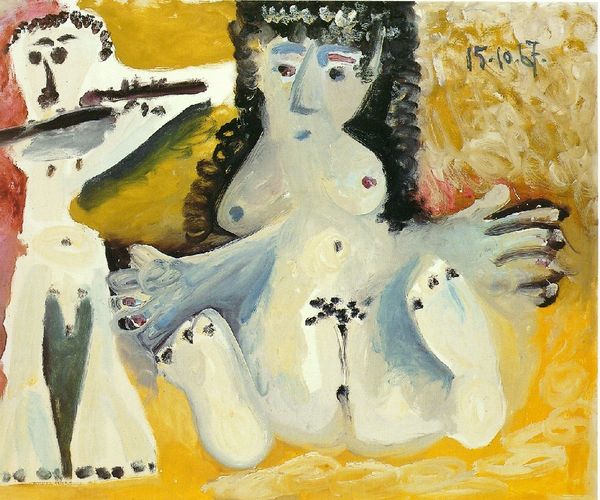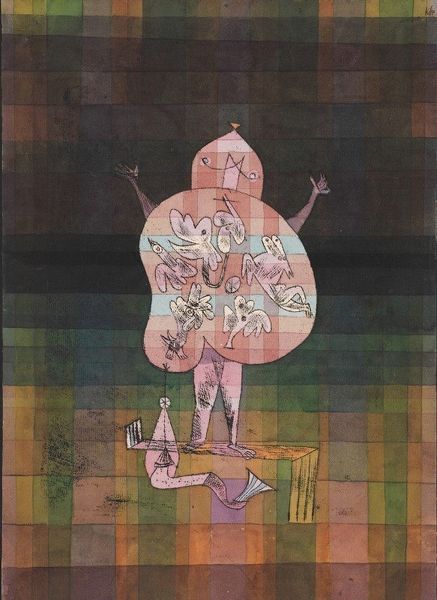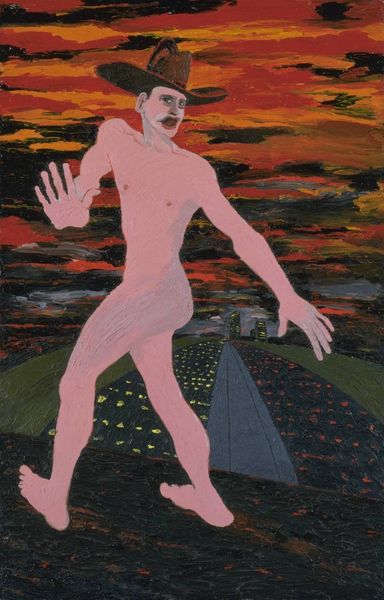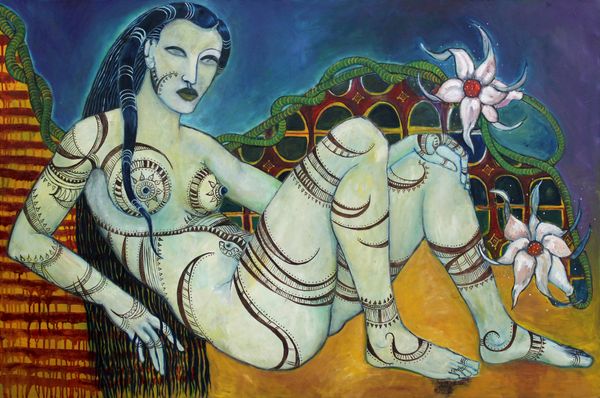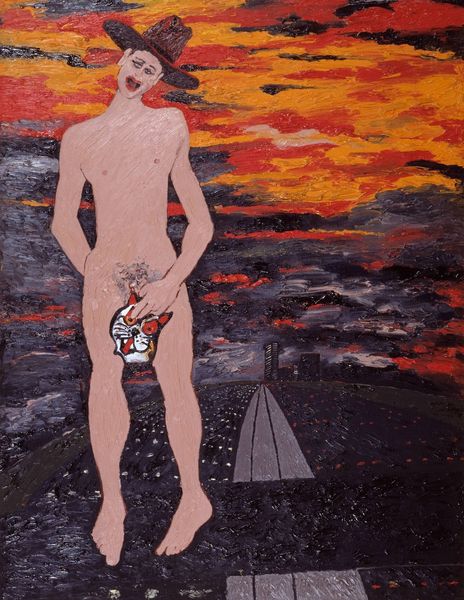
painting, oil-paint
#
narrative-art
#
painting
#
oil-paint
#
landscape
#
figuration
#
oil painting
#
expressionism
#
history-painting
#
surrealism
#
portrait art
#
expressionist
Copyright: Victor Brauner,Fair Use
Curator: Victor Brauner created this rather unsettling oil painting in 1929. It’s titled "The Poet Geo Bogza Shows His Head to the Landscape with Drills." Editor: Drills? My initial reaction is one of disquiet, almost repulsion. The stark, unnatural colors combined with the dissected figure… it’s quite visceral. Curator: The materials certainly play a role. The smoothness of the oil paint lends a strange, almost clinical quality to the scene, which contrasts jarringly with the raw depiction of internal organs. Note the exposed breast and what appears to be a sectioned head. Editor: I am particularly struck by how the text is integrated directly into the landscape. Who was Bogza and what significance might the landscape hold in shaping the artistic or political views? Curator: Geo Bogza was a Romanian avant-garde poet and journalist known for his rebellious and surrealist leanings, so Brauner is representing the intellectual revealing himself to his context, tools in hand. This work probably speaks to the intellectual and creative anxieties of the time. Editor: Absolutely. It's worth considering how Brauner's Surrealist aesthetic intersects with the historical context of interwar Romania. How would a work like this have been received by the artistic establishment and the public at large? Its provocative imagery likely challenged conventional notions of art. Curator: And certainly challenged conventional portraiture. I’m interested in the mechanization imagery alongside more organic human representation. The drills, scattered like grave markers, feel…industrial, perhaps referring to societal pressures? The use of drills perhaps is also hinting toward surgical procedures in the earlier twentieth century. Editor: Indeed. This artwork highlights not only individual turmoil and internal dissection but also the tools in their role during cultural transition and pressure within modern life. Its current place within museum culture also plays a vital role. Curator: Definitely. Viewing this today allows us a continued dialog on materiality, selfhood and historical experience. Editor: A disquieting, but crucial glimpse into art's ability to process both artistic exploration and social issues, right?
Comments
No comments
Be the first to comment and join the conversation on the ultimate creative platform.
